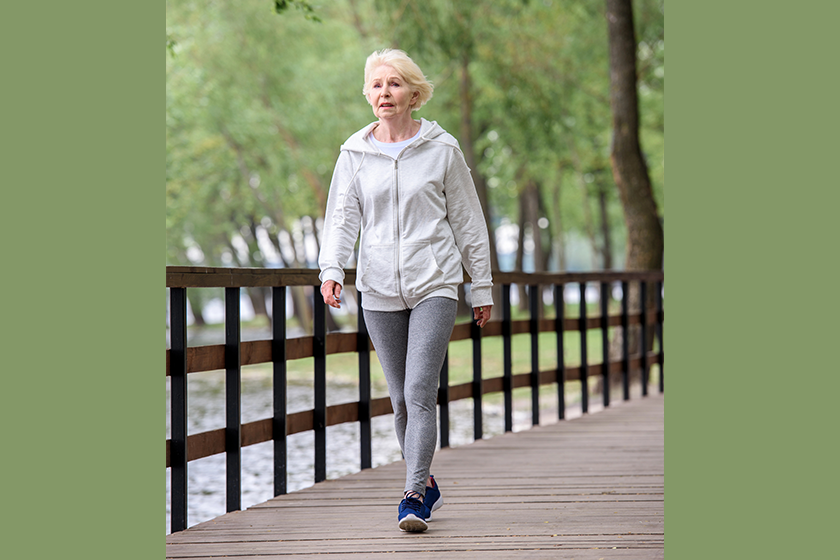Daily walking is one of the simplest and most effective ways for seniors to maintain good health and mobility. It helps improve cardiovascular fitness, balance, and mental well-being. However, for many seniors, walking can sometimes feel like a chore rather than an enjoyable activity. Whether it’s due to physical discomfort, a lack of motivation, or simply a dull routine, these challenges can make walking less appealing. The good news is that with a few adjustments, walking for seniors can become more enjoyable and engaging, making it a daily activity they look forward to.
Choose the Right Footwear for Comfort
Wearing the right shoes can make walking more comfortable for seniors. Improper footwear may cause discomfort or pain, which can reduce motivation to walk regularly. Shoes with proper arch support and non-slip soles help prevent foot issues and provide the stability needed. It’s also important to check the fit regularly, as feet may change shape with age. Choosing well-fitting shoes can greatly improve the walking experience.
Find Scenic and Interesting Routes
Walking the same route every day can quickly become monotonous. Introducing variety into the walking routine can make it more engaging. Seniors can explore different parks, nature trails, or even scenic streets in their neighborhood. If mobility is a concern, even switching up the path within the same area—by walking in the opposite direction or taking detours—can provide a fresh perspective. Walking in a natural setting, such as a park or garden, has the added benefit of reducing stress and promoting relaxation, which enhances the overall experience.
Incorporate Social Interaction
Walking doesn’t have to be a solitary activity. Many seniors enjoy walking with a friend, family member, or a group, as the social element makes it more enjoyable. It offers companionship and conversation, which can help distract from any discomfort. Walking with others also provides motivation and encouragement, making it easier for seniors to maintain a routine.
For those who prefer solitude, listening to a podcast, an audiobook, or music while walking can offer a similar sense of engagement. Just be sure to keep the volume at a level where they can still hear their surroundings for safety.
Set Small, Achievable Goals
For some seniors, the idea of walking long distances can seem overwhelming, particularly if they are new to regular physical activity. To combat this, it helps to set small, achievable goals. Instead of aiming for a specific distance or time, they can focus on increasing the number of steps they take each day or gradually extending their walking time by a few minutes. Achieving these smaller goals provides a sense of accomplishment and motivation to keep going.
Celebrating progress—whether it’s walking for five more minutes than the previous day or exploring a new trail—can make the activity feel rewarding and fun.
Incorporate Rest and Recovery
Though walking is low-impact, it can still affect the body, especially for seniors with joint or muscle pain. Adding rest and recovery to the routine helps keep the activity comfortable. Taking short breaks, finding a bench to relax, or doing gentle stretches before and after walks can ease muscle tension. Staying hydrated is also important, so bringing a water bottle can prevent fatigue and keep walks enjoyable.
Pay Attention to the Time of Day
When it comes to walking for seniors, timing can make a significant difference in comfort. In warmer climates, early morning or late afternoon walks may be the most pleasant, as the temperature is cooler and the sun is less intense. For those in cooler areas, midday walks can provide warmth and sunlight, which are beneficial for both mood and vitamin D levels.
Adjusting the time of day for walks based on personal preferences and local weather conditions can turn a simple walk into a more enjoyable experience.
Make Walking a Daily Habit
Building a daily walking routine is one of the most effective ways to make it a part of a senior’s lifestyle. Consistency helps the body adapt to the activity, making each walk feel easier and more enjoyable. It can also reduce stiffness or discomfort that sometimes accompanies sporadic exercise. Seniors can start by designating a specific time each day for their walk, which helps establish a routine they can stick to.
It’s also helpful to integrate walking into daily life. For instance, seniors can walk to run errands or visit nearby friends, adding purpose to their walks and giving them additional motivation to stay active.
Celebrate Milestones
it’s important to celebrate milestones, no matter how small they may seem. Whether it’s walking an extra block, reaching a weekly step goal, or simply maintaining a regular walking schedule, each achievement is worth celebrating. These milestones serve as reminders of progress and reinforce the positive experience of walking, making seniors more likely to enjoy their daily strolls.
Transforming Walks Into Joyful Routines
Walking for seniors doesn’t have to be a mundane or difficult task. By making small changes, like choosing comfortable footwear, varying the walking route, adding social interaction, setting achievable goals, and paying attention to timing and rest, seniors can transform their daily walks into enjoyable, rewarding experiences. At our independent living community, we are committed to supporting residents in maintaining an active lifestyle. With access to scenic walking paths, planned group walks, and wellness programs, we help make daily walking a pleasurable part of everyday life.
We offer a welcoming environment that encourages social interaction and celebrates residents’ progress, motivating them to stay active and engaged. If you or your loved ones are looking for a supportive community that promotes healthy habits, contact us today to learn more or schedule a tour.







